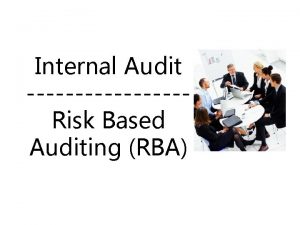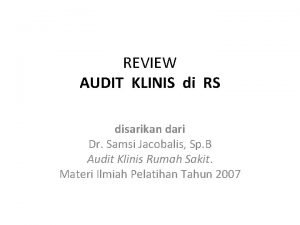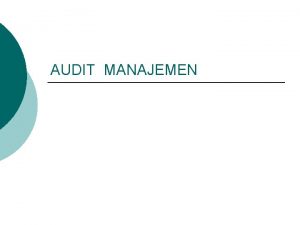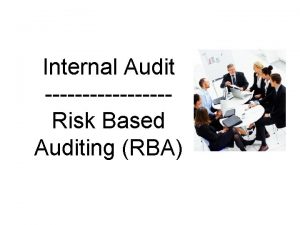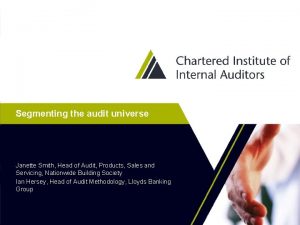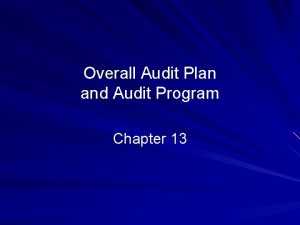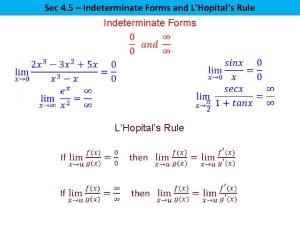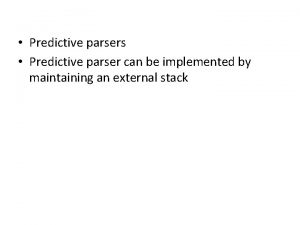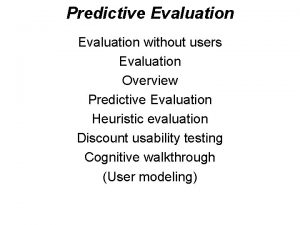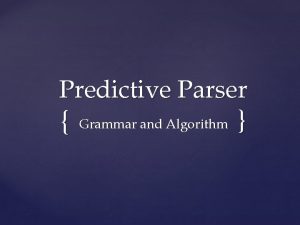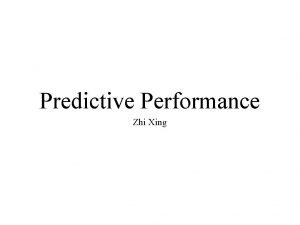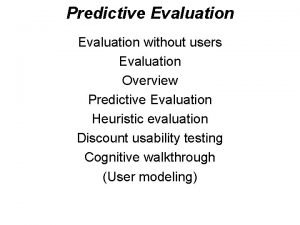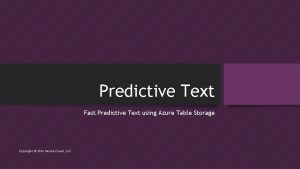PREDICTIVE AUDIT Predictive Audit Can we use CA












- Slides: 12

PREDICTIVE AUDIT

Predictive Audit • Can we use CA to predict the future? • Predictive audit is a look forward audit that examines the validity of business transactions before they are executed and compares the results to normative models. Auditors and management will be notified beforehand on the areas that prone to error. • Continuous assurance, utilizing some techniques such as analytical method and validity test, could detect anomalous transactions sooner than traditional audit does (Vasarhelyi et al, 2002).

THE APPLICATION OF PREDICTIVE AUDIT

Transaction status prediction • Revenue cycle is a high risk area. • This study aims to predict future sales cancellations, an indicator of a suspicious transaction. • If there is any suspicious transaction, the system should have a warning or an alarm report. • What prediction model(s) will more accurately forecast business transaction outcomes?

DATA SET AND MODELING

Data • The data is from one of the largest banks in the world. • The data consists of: – – Sales and cancellation transactions for a product Salesperson information Complaints Reimbursements • The financial product data set has 607, 189 records during a 6 months period. – 566, 753 ordinary (non-cancelled) transactions – 40, 435 canceled transactions

Cancellation transactions by date 700 600 500 400 300 200 100 0 11. 4. 2009 11. 24. 200912. 14. 2009 1. 3. 2010 1. 23. 2010 2. 12. 2010 3. 4. 2010 3. 24. 2010 4. 13. 2010

Model development • Key variables known at the time of product sale. 1. Sale cancellation ratio by sale employee 2. Reimbursement ratio by sale employee 3. Matched sale ratio by sale employee 4. Sale to inactive account ratio by sale employee 5. Sale with complaint ratio by sale employee 6. Sale between employees ratio by sale employee 7. Number of sales transactions by employee

RESULTS AND ANALYSIS

Results and analysis • Models comparison of cost-sensitive approach Accuracy False negative Model/ Accuracy 1: 14 False ratio False • rate Measurements negative positive rate 1: 16 ratio False positive rate 0. 64 0. 48 0. 35 0. 53 0. 36 0. 48 Logistic regression 0. 70 0. 50 0. 28 0. 57 0. 39 0. 44 Support vector machine 0. 79 0. 63 0. 18 0. 73 0. 56 0. 25 J 48

CONCLUSION

Conclusion • Predictive audit lets auditors monitor and audit controls in a preventive basis. • The result of prediction model could alert auditors for suspicious transactions. Future work • Improve the model – Include more variables • Expand the scope to cover more products
 Perbedaan audit konvensional dengan audit berbasis risiko
Perbedaan audit konvensional dengan audit berbasis risiko Audit rekam medis adalah
Audit rekam medis adalah Beda audit medis dan audit klinis
Beda audit medis dan audit klinis Penyelesaian audit dan tanggung jawab pasca audit
Penyelesaian audit dan tanggung jawab pasca audit Konsep dasar audit manajemen
Konsep dasar audit manajemen Perbedaan prosedur audit top-down dengan bottom-up
Perbedaan prosedur audit top-down dengan bottom-up Auditor definition
Auditor definition Perbedaan audit konvensional dengan audit berbasis risiko
Perbedaan audit konvensional dengan audit berbasis risiko Auditing means
Auditing means Janette loveys
Janette loveys Overall audit plan
Overall audit plan How you use ict today and how you will use it tomorrow
How you use ict today and how you will use it tomorrow L hopital's rule
L hopital's rule
